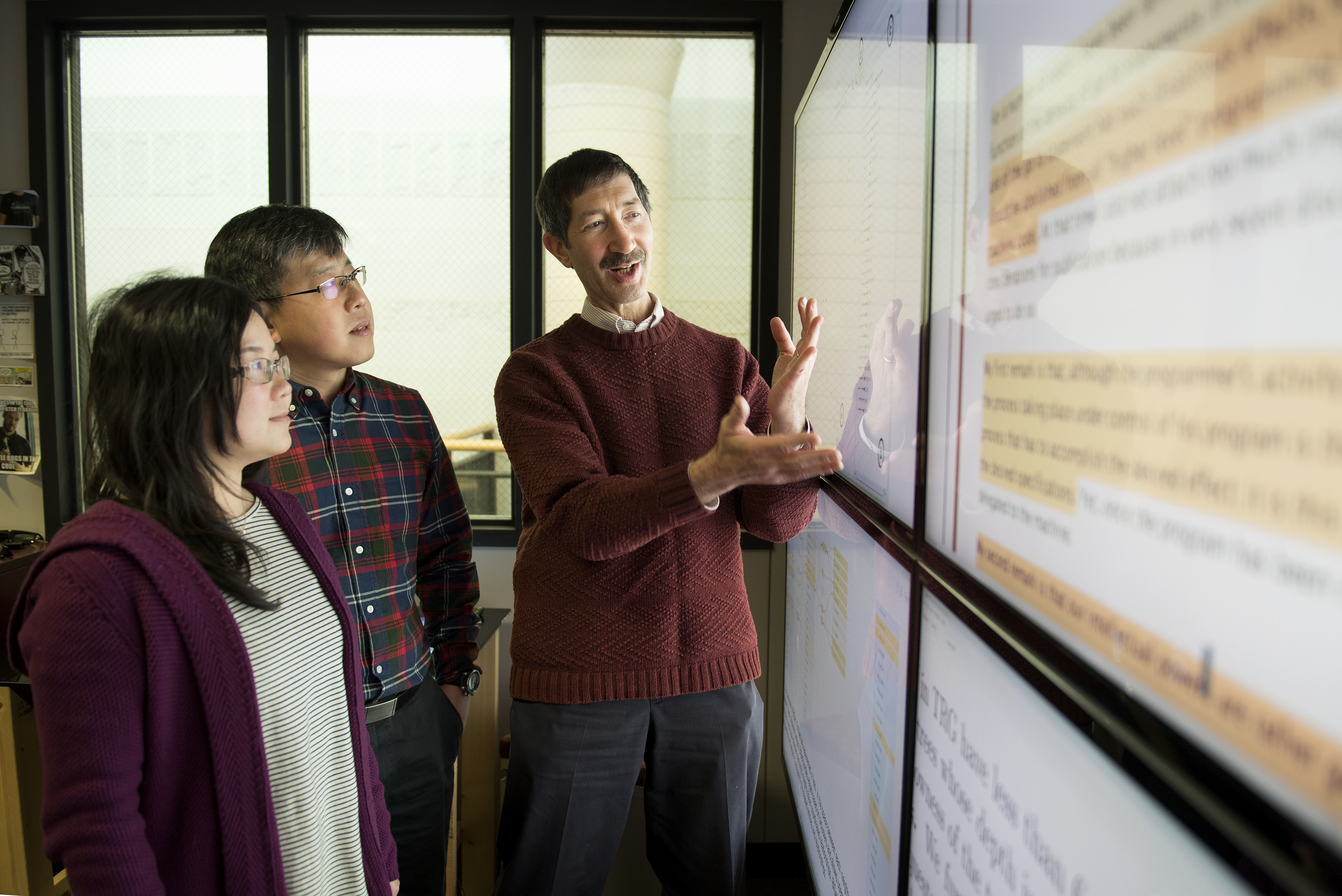Congratulations to DAC PhD (CS) graduate Feng Chen
 Congratulations to DAC PhD (CS) graduate Feng Chen (advisor: CT Lu) who has accepted a faculty position at SUNY, Albany! Feng joins in Jan 2014.
Congratulations to DAC PhD (CS) graduate Feng Chen (advisor: CT Lu) who has accepted a faculty position at SUNY, Albany! Feng joins in Jan 2014.
Our talented team has been recognized with many competitive research awards and featured in major news and media outlets such as the Wall Street Journal, Newsweek, the Boston Globe and the Chronicle of Higher Education.

 Congratulations to DAC PhD (CS) graduate Feng Chen (advisor: CT Lu) who has accepted a faculty position at SUNY, Albany! Feng joins in Jan 2014.
Congratulations to DAC PhD (CS) graduate Feng Chen (advisor: CT Lu) who has accepted a faculty position at SUNY, Albany! Feng joins in Jan 2014.
 Congrats to Dhruv Batra who has received an Amazon Web Services in Education grant for developing CloudCV, a cloud-based computer vision platform for processing big visual data. CloudCV provides APIs for MATLAB and Python as well as a web front-end, and will benefit both experts and non-experts who desire to analyze image data. For more go to CloudCv
Congrats to Dhruv Batra who has received an Amazon Web Services in Education grant for developing CloudCV, a cloud-based computer vision platform for processing big visual data. CloudCV provides APIs for MATLAB and Python as well as a web front-end, and will benefit both experts and non-experts who desire to analyze image data. For more go to CloudCv
 Congratulations to DAC faculty member Aditya Prakash for his new NSF award entitled: “Immunization in Influence and Virus Propagation on Large Networks”! Aditya is exploring the question: given a graph, like a social network or the blogosphere, in which an virus (or meme or rumor) has been spreading for some time, how to select the k best nodes for immunization/quarantining immediately? The work has several applications in public health and epidemiology, viral marketing and social media like Twitter.
Congratulations to DAC faculty member Aditya Prakash for his new NSF award entitled: “Immunization in Influence and Virus Propagation on Large Networks”! Aditya is exploring the question: given a graph, like a social network or the blogosphere, in which an virus (or meme or rumor) has been spreading for some time, how to select the k best nodes for immunization/quarantining immediately? The work has several applications in public health and epidemiology, viral marketing and social media like Twitter.
Close on the heels of DAC PhD alumnus Alex Endert winning the outstanding dissertation award in the CS department, he is designated the recipient of the first ever annual IEEE VGTC Best Doctoral Dissertation Award! Congrats Alex and advisor Chris! The award was presented at the IEEE VIS Conference in October 2013.
 Congratulations to DAC PhD student Ji Wang (advisor: Chris North), and DAC alumnus Sheng Guo who, along with U. Toronto grad student Jian Zhao, Round One Winners of the Yelp Dataset Challenge! They are in good company: other winners are from CMU, Stanford, and Berkeley.
Congratulations to DAC PhD student Ji Wang (advisor: Chris North), and DAC alumnus Sheng Guo who, along with U. Toronto grad student Jian Zhao, Round One Winners of the Yelp Dataset Challenge! They are in good company: other winners are from CMU, Stanford, and Berkeley.
 Congratulations to DAC PhD student Huijuan Shao for her Best Student Paper Award in the Computational Sustainability Track at AAAI’13! She receives $750 from CRA/CCC.
Congratulations to DAC PhD student Huijuan Shao for her Best Student Paper Award in the Computational Sustainability Track at AAAI’13! She receives $750 from CRA/CCC.
 Dhruv Batra’s research, with Chris Dyer, Kevin Gimpel and Greg Shakhnarovich, won a Google Research Award. Congratulations Dhruv!
Dhruv Batra’s research, with Chris Dyer, Kevin Gimpel and Greg Shakhnarovich, won a Google Research Award. Congratulations Dhruv!